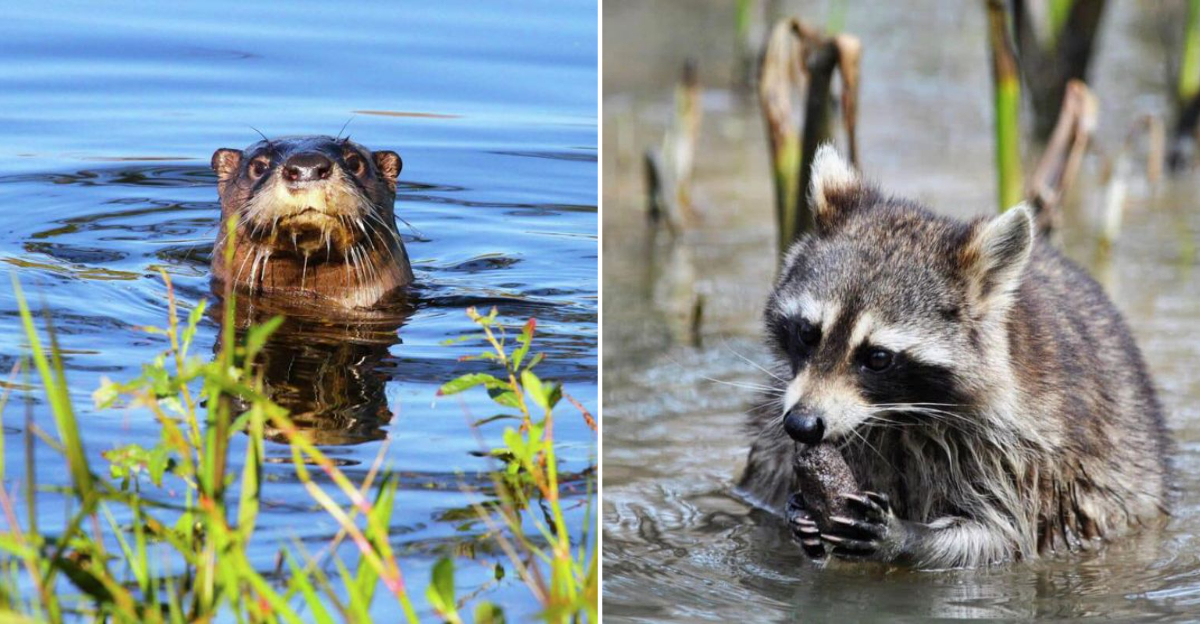I thought I was walking alone—until the leaves moved.
Hiking through Tennessee’s Great Smoky Mountains, I was seconds away from stepping on a copperhead coiled silently in the trail’s debris. I never saw it. And that’s exactly the point.
Copperheads don’t just blend into their environment—they become it. These venomous masters of disguise aren’t aggressive, but they don’t flee either.
Instead, they vanish in plain sight, right under your boots. In a state where nature still holds the upper hand, knowing how and where these snakes hide can mean the difference between a memorable adventure and a medical emergency.
1. The Toothy Terror: American Alligator

These prehistoric-looking reptiles have been patrolling Louisiana’s waters for millions of years, and I still get goosebumps every time I spot those eyes peeking above the waterline. A full-grown male can reach over 13 feet long and weigh up to 1,000 pounds!
Last summer, I watched in awe as a mama gator carefully carried her hatchlings in her massive jaws from nest to water. Despite their fearsome reputation, they’re surprisingly attentive parents. Their population has bounced back remarkably after being endangered in the 1960s.
Beyond their ecological importance as apex predators, these scaly locals contribute to Louisiana’s identity and economy through tourism and regulated harvesting for their meat and hide. Nothing says Louisiana quite like these armored giants!
2. The Comeback Kid: Louisiana Black Bear
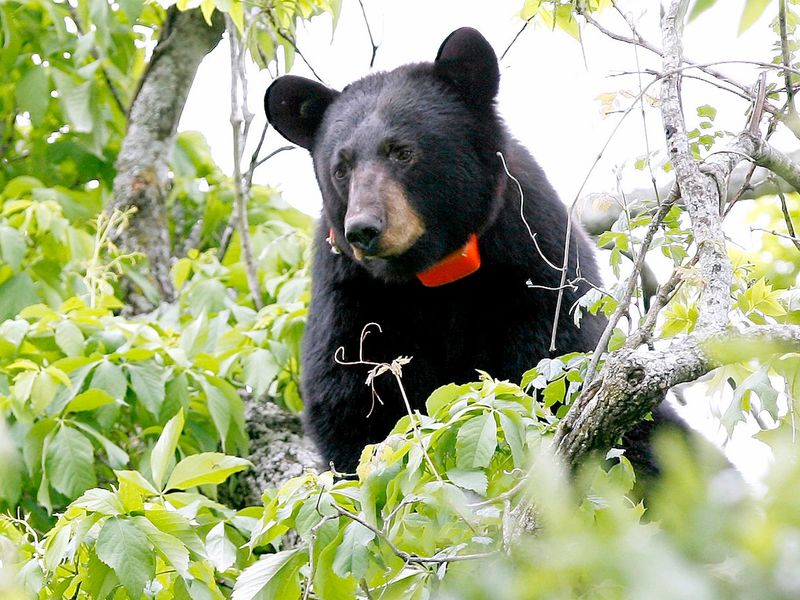
Standing face-to-face with a Louisiana black bear is a humbling experience I’ll never forget. Though smaller than their grizzly cousins, these magnificent creatures can still weigh up to 400 pounds and stand 6 feet tall when on hind legs.
Once threatened with extinction, careful conservation efforts have helped their population rebound. In 2016, they were even removed from the endangered species list—a true conservation success story! I’ve tracked their distinctive paw prints through muddy bottomlands, marveling at how they’ve adapted to our human-altered landscape.
Primarily vegetarian, these bears feast on berries, nuts, and insects, though they won’t turn down the occasional fish. Their climbing skills are impressive for such bulky animals, and cubs often scramble up trees when startled.
3. The Invasive Rodent: Nutria
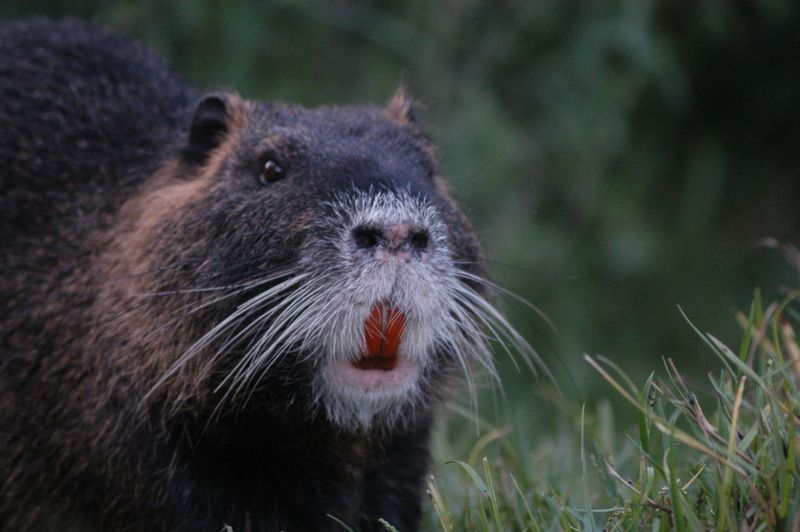
With bright orange buck teeth and ratlike tails, nutria aren’t winning any beauty contests, but boy are they fascinating! I remember the first time I spotted one swimming across a bayou—I thought it was a beaver until I noticed those distinctive choppers. These South American imports were brought to Louisiana for fur farming in the 1930s, but escaped and made themselves right at home.
Growing up to 20 pounds, these oversized rodents have become the bane of wetland conservationists. Their voracious appetite for plant roots destroys marshland at alarming rates, accelerating coastal erosion. My photographer friend jokes they’re “eating Louisiana one bite at a time.”
Despite control efforts, including a bounty program that pays hunters for each tail, nutria continue to thrive in our wetlands. Some locals have even developed recipes for nutria meat!
4. The Sleek Hunter: American Mink
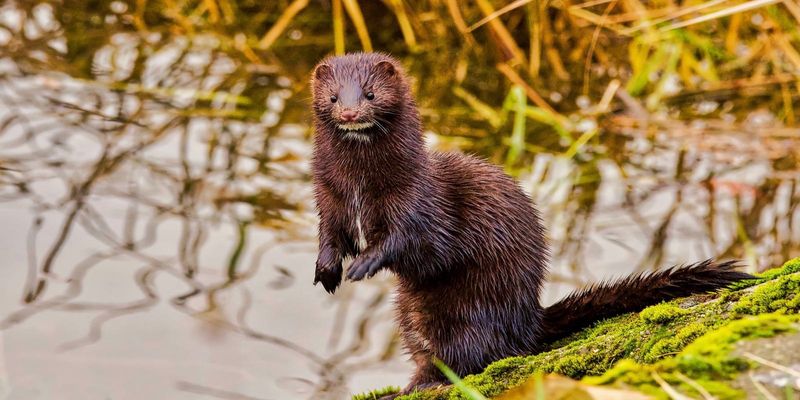
Quick as lightning and twice as sneaky, the American mink is a master predator I’ve spent countless hours trying to photograph. These chocolate-brown mustelids dart along waterways with such speed that capturing them on camera requires equal parts patience and luck.
Measuring about two feet long including their tail, minks have partially webbed feet perfect for swimming and hunting both in water and on land. Their luxurious fur once made them prized by trappers, but today they face threats from habitat loss and competition with non-native mink species escaped from fur farms.
One dawn, I watched a mink systematically hunt crayfish along a bank, flipping over rocks with surprising strength for its size. Their voracious appetite means they’ll eat almost anything they can catch—fish, frogs, birds, and even small mammals don’t stand a chance against these efficient hunters.
5. The Playful Swimmer: River Otter
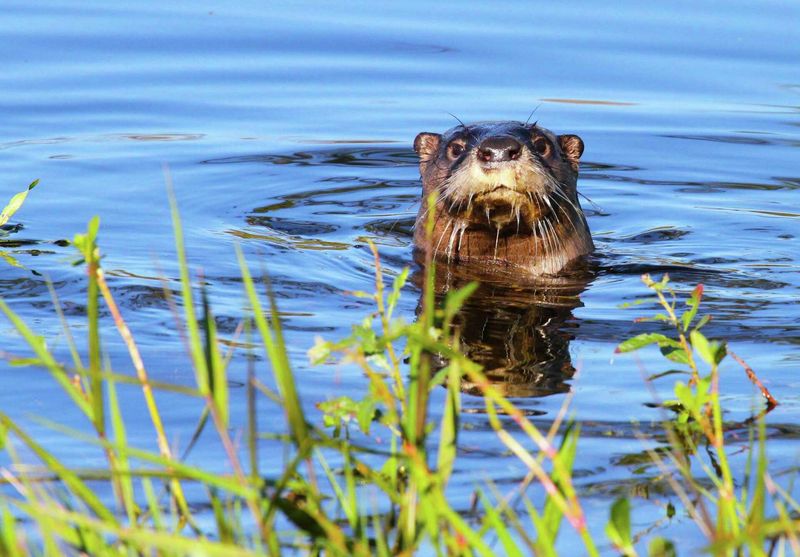
Watching river otters slide down muddy banks like furry torpedoes is guaranteed to make even the grumpiest person smile! During my kayaking trips through Louisiana’s backwaters, spotting these playful creatures always feels like stumbling upon a secret water park for wildlife.
River otters live in family groups, and their apparent joy in simple activities—from wrestling matches to synchronized swimming—reminds me to find pleasure in life’s small moments. These skilled hunters can swim at speeds up to 8 mph and stay submerged for up to four minutes while searching for fish, crayfish, and other aquatic snacks.
Their dense fur—nearly a million hairs per square inch—keeps them warm and dry even in winter waters. Though once endangered due to trapping and pollution, river otter populations have rebounded in Louisiana, offering hope that with proper conservation, wildlife can recover from human impacts.
6. The Graceful Leaper: White-Tailed Deer

The flash of a white flag tail disappearing into dense underbrush signals one of Louisiana’s most elegant wetland residents. During my pre-dawn hikes along the marsh edges, I’ve startled many white-tailed deer—and been equally startled in return!
These adaptable ungulates thrive in the transitional zones between wetlands and forests, browsing on tender vegetation and swimming surprisingly well when necessary. Males grow impressive antlers each year, shedding them in winter before regrowing an even larger set the following spring. My collection of found antlers chronicles years of woodland wanderings.
Fawns, born with spotted camouflage coats, are often left hidden in tall grasses while mothers feed nearby. I once accidentally approached a hidden fawn who remained perfectly still, trusting its camouflage completely. Their remarkable senses—they can rotate their ears independently to pinpoint sounds—make them challenging to observe in the wild.
7. The Masked Bandit: Raccoon
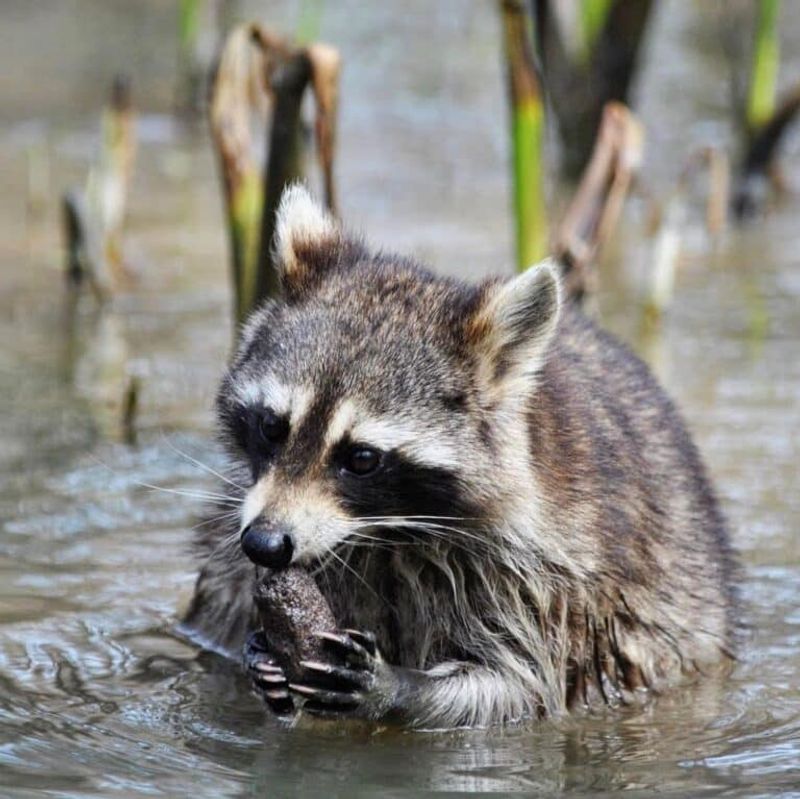
Those dexterous little hands have gotten into my backpack more times than I care to admit! Raccoons are the clever troublemakers of Louisiana’s wetlands, and I’ve developed a grudging respect for their problem-solving abilities after watching one methodically open three different latches on my cooler.
Their name comes from the Algonquian word “aroughcoune,” meaning “he who scratches with his hands.” These masked mammals excel at finding food in both aquatic and terrestrial environments, washing items in water when possible—a behavior that fascinates scientists who still debate whether it’s functional or simply a fixed action pattern.
Raccoons adapt remarkably well to human presence, sometimes too well for our liking! Despite their cute appearance, they’re tough survivors carrying ancient lineage—fossil records show raccoon ancestors dating back 25 million years. Their night-time antics and chattering vocalizations add character to Louisiana’s nocturnal wetland symphony.
8. The Tusked Forager: Wild Boar
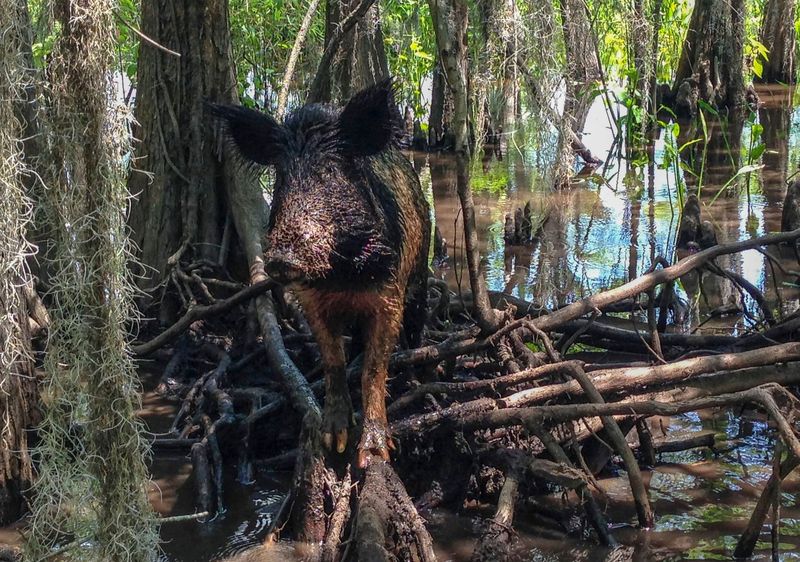
The ground looks like it’s been tilled by a drunk farmer with a broken plow—that’s how you know wild boars have been rooting around! These bristly behemoths can weigh over 400 pounds and transform a pristine wetland into what looks like a battlefield overnight.
Originally brought to America by Spanish explorers in the 1500s, these non-native invaders have become one of Louisiana’s most destructive species. My friend’s rice farm was decimated by a sounder (group) of boars that plowed through his fields like living bulldozers. Their intelligence makes them frustratingly difficult to control despite year-round hunting with no bag limits.
Females can produce two litters annually with up to 12 piglets each, fueling population explosions that threaten native wildlife and vegetation. Despite the ecological havoc they wreak, I can’t help but admire their resilience and adaptability as they thrive in habitats from marshes to forests.
9. The Nimble Hopper: Swamp Rabbit
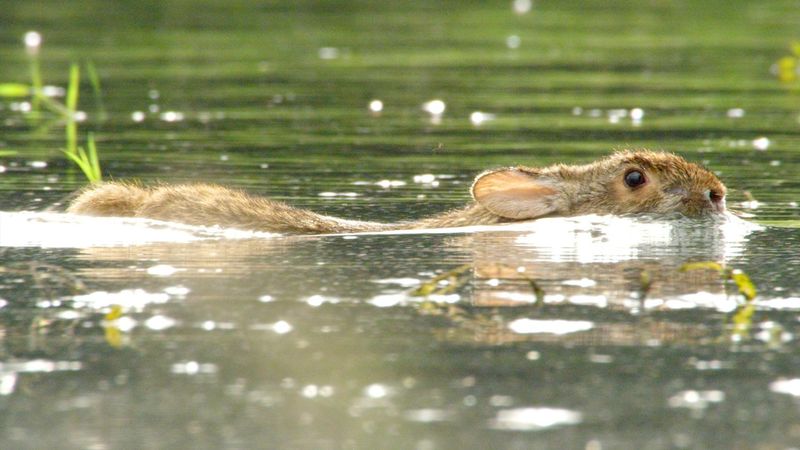
Larger than your average cottontail, swamp rabbits have mastered the art of wetland living. My hunting dog once chased one straight into a bayou, where the rabbit swam across with surprising speed, leaving my confused retriever barking at the water’s edge!
These strong swimmers have water-repellent fur and broad, slightly webbed feet that help them navigate flooded areas. Unlike their upland cousins, they don’t dig extensive burrow systems, instead creating shallow depressions called “forms” in dense vegetation where they rest during daylight hours.
A favorite prey for nearly every predator in the ecosystem, from alligators to owls, these rabbits rely on explosive speed and zigzag running patterns to escape danger. Their population fluctuates naturally in cycles, booming in good years and crashing during floods or droughts. President Jimmy Carter famously reported being attacked by a swimming swamp rabbit during a 1979 fishing trip!
10. The Colorful Dabbler: Wood Duck
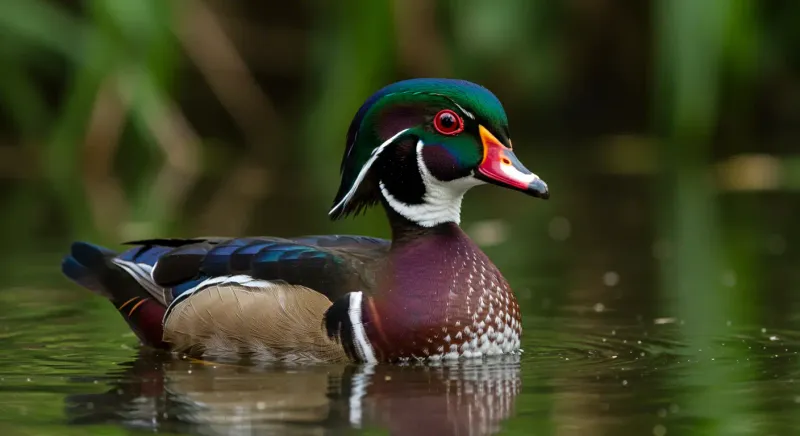
Mother Nature must have been feeling particularly artistic when she designed the wood duck! The first time I spotted a male in breeding plumage—with his metallic purple-green head, red eyes, and intricate white patterns—I nearly dropped my binoculars in disbelief that something so colorful could exist in our swamps.
Unlike most ducks, these beautiful birds perch and nest in trees, sometimes up to 65 feet high. Baby ducklings perform an astonishing feat: just 24 hours after hatching, they leap from their tree cavity nest (without yet being able to fly) and bounce harmlessly on the forest floor before following mom to water.
Wood ducks were nearly hunted to extinction in the early 1900s for their meat and spectacular feathers. Conservation efforts, including widespread nesting box programs, have helped their populations rebound dramatically. Their distinctive squealing call—nothing like the typical duck quack—echoes through wooded wetlands year-round.
11. The Patient Fisher: Great Blue Heron
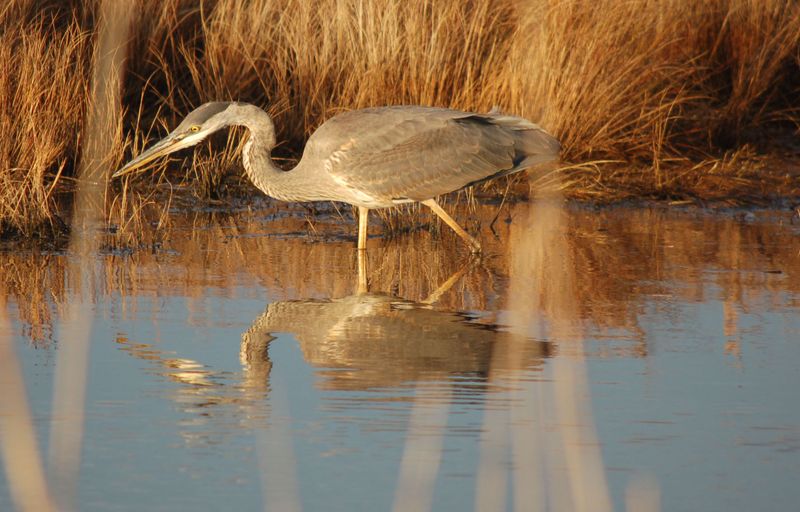
Standing motionless like a statue carved from feathers, the great blue heron embodies patience in predator form. I’ve watched one stand frozen for nearly 30 minutes before striking with lightning speed to spear a fish—a humbling lesson in focus and timing that I try to apply to my own wildlife photography.
Despite their massive size—standing 4 feet tall with a 6-foot wingspan—these birds weigh only about 5-6 pounds thanks to hollow bones and specialized feather structure. Their distinctive silhouette, with S-curved neck and dagger-like bill, is unmistakable against Louisiana’s golden marsh sunsets.
Nesting in colonies called rookeries, sometimes with hundreds of pairs in a single stand of trees, these birds create quite a spectacle during breeding season. Their prehistoric-sounding croaks and gurgles carry across the water, announcing their presence long before you spot them. Year-round residents in Louisiana, they add majesty to our wetlands in all seasons.
12. The Elegant Wader: Snowy Egret

With golden slippers that look like they belong on a runway model, snowy egrets bring a touch of elegance to muddy Louisiana wetlands. Their pristine white feathers seem to glow against the dark water, creating a striking contrast that’s irresistible to photographers like me.
These medium-sized herons were nearly wiped out in the late 1800s when their beautiful plumes became fashionable hat decorations. At the height of the plume trade, egret feathers were worth twice their weight in gold! Thankfully, conservation laws and changing fashion sensibilities saved these birds from extinction.
Unlike their patient heron relatives, snowy egrets actively chase prey, running through shallow water with wings spread, creating shadows that drive small fish toward their waiting bills. I’ve spent countless mornings watching their distinctive “yellow feet shuffle” hunting technique—they vibrate their bright feet underwater to stir up prey, demonstrating both beauty and practicality in perfect harmony.
13. The National Symbol: Bald Eagle
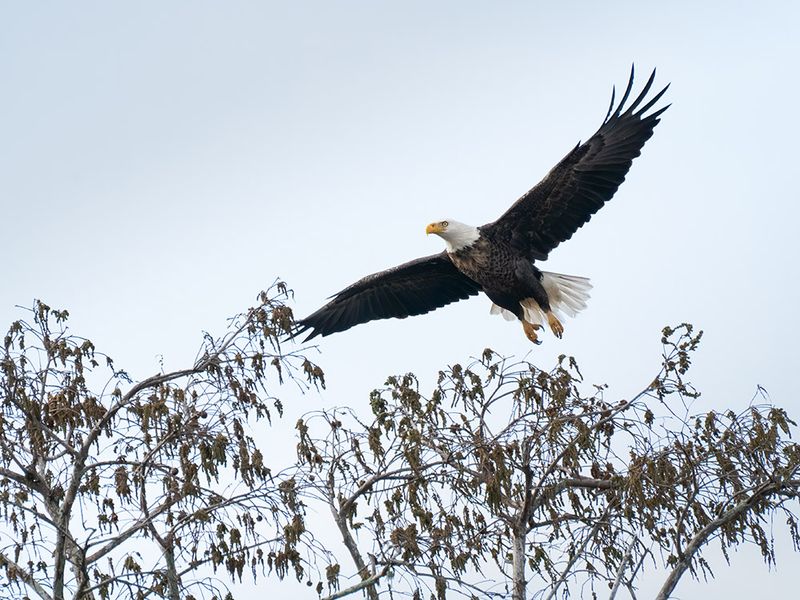
The heart-stopping moment when a bald eagle plunges from the sky toward Louisiana’s waters never gets old, no matter how many times I’ve witnessed it. Our national bird has made a remarkable comeback in the Bayou State, with nesting pairs increasing from near-zero in the 1970s to hundreds today.
These massive raptors build the largest nests of any North American bird—some weighing over a ton and measuring 9 feet across! A mated pair returns to the same nest year after year, adding new materials each season. I’ve monitored one particular nest along the Atchafalaya Basin for seven consecutive years, watching multiple generations of eaglets fledge.
While primarily fish-eaters, eagles won’t hesitate to steal meals from other birds (particularly ospreys) or scavenge carrion when convenient. With their 7-foot wingspan and distinctive white head and tail, adult bald eagles create an unforgettable silhouette against Louisiana’s blue skies—a powerful symbol of conservation success.
14. The Woodland Sentinel: Red-Shouldered Hawk
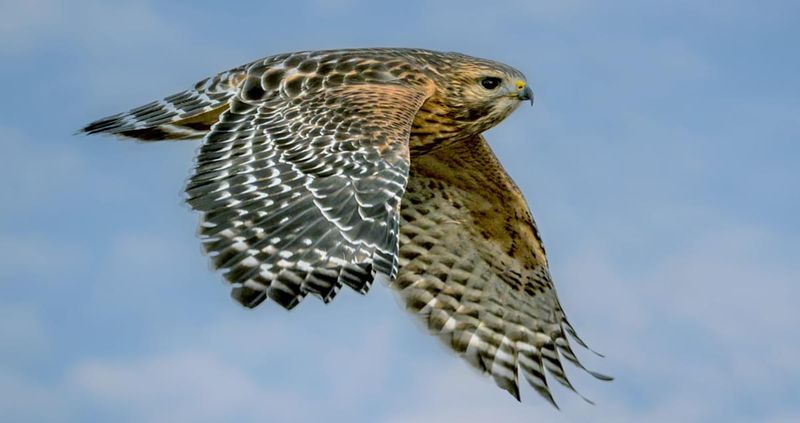
The distinctive “kee-aah” call of the red-shouldered hawk announces its presence long before you spot its rusty-red shoulders and barred chest. These woodland raptors have become my reliable companions during swamp explorations, often following my movements with curious yellow eyes from perches above.
Medium-sized compared to their red-tailed cousins, these hawks specialize in hunting along the edges where forests meet wetlands. Their diet includes frogs, snakes, small mammals, and even crawfish—making Louisiana’s diverse ecosystems perfect hunting grounds. I once watched one pluck a water snake from the surface without even getting its feathers wet!
Red-shouldered hawks form monogamous pairs and perform spectacular courtship displays involving steep dives and spiral flights. Unlike many raptor species that migrate, most Louisiana red-shouldered hawks stay year-round, defending their territories through all seasons. Their adaptability to suburban environments has helped them maintain stable populations while other raptor species decline.
15. The Living Fossil: Alligator Gar
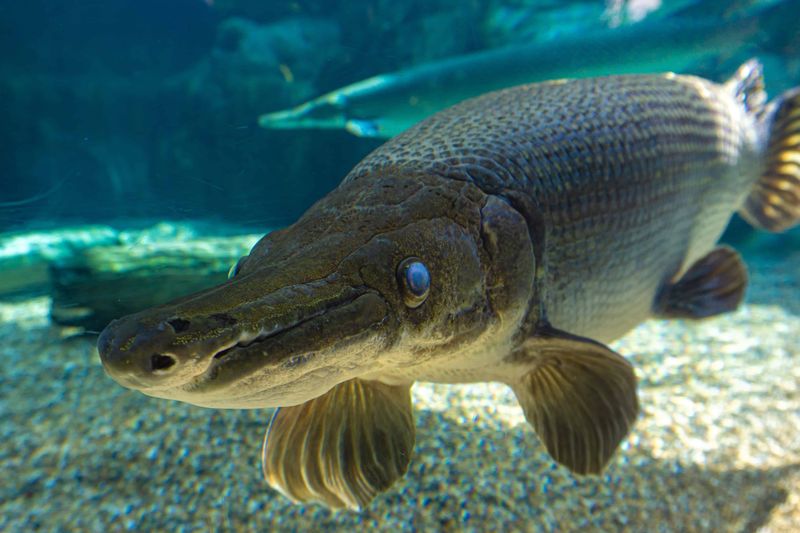
With a face only a mother could love, the prehistoric-looking alligator gar is essentially a swimming time capsule. The first time I caught one while fishing in the Atchafalaya Basin, I felt like I’d hooked a dinosaur! These massive fish can exceed 300 pounds and 10 feet in length, with armor-like scales that Native Americans once used as arrowheads.
Despite their fearsome appearance—complete with double rows of teeth and an elongated, alligator-like snout—these gentle giants pose no threat to humans. They’re actually quite shy and will typically flee rather than confront divers or swimmers. Their air bladder functions as a primitive lung, allowing them to gulp air at the surface and survive in oxygen-poor waters.
Once considered a nuisance species and slaughtered en masse, scientists now recognize alligator gar as important apex predators that help maintain balanced fish populations. Some specimens can live 50+ years, making them living libraries of environmental history in our waterways.
16. The Spoonbill Swimmer: Paddlefish
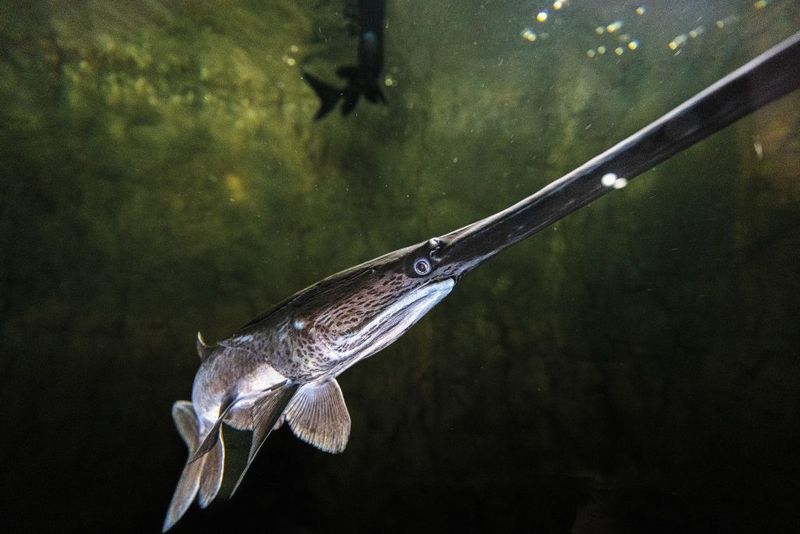
Imagine a fish with a nose like a canoe paddle and you’ll have a pretty good picture of the American paddlefish! I’ll never forget my astonishment when a fisheries biologist friend let me help tag these bizarre creatures during a population survey on the Red River.
These ancient fish can grow over 5 feet long and weigh more than 60 pounds, swimming through Louisiana’s rivers with their enormous mouths open to filter-feed on microscopic zooplankton. Unlike most fish, paddlefish have mostly cartilage instead of bone, making them relatives of sharks rather than typical bony fish. Their paddle-shaped rostrum (snout) is covered with thousands of electroreceptors that detect the tiny electrical fields produced by their prey.
Once abundant throughout the Mississippi River basin, paddlefish populations have declined due to dam construction blocking their spawning migrations and overharvesting for their eggs (sold as caviar). Louisiana’s remaining paddlefish represent a living link to the Cretaceous period, having survived relatively unchanged for over 65 million years!
17. The Venomous Lurker: Cottonmouth

Few creatures inspire as much fear—and unfortunately, as many tall tales—as the cottonmouth. Also called water moccasins, these hefty pit vipers derive their name from the startling white lining of their mouths, which they display when threatened. My first close encounter with one sunning on a log had my heart racing, though the snake seemed thoroughly unimpressed by my presence.
Growing up to 4 feet long, cottonmouths are excellent swimmers, often holding their heads above water while their bodies remain submerged. Unlike many snakes that flee from humans, cottonmouths may stand their ground when threatened, coiling and opening their mouths in a defensive display that’s both impressive and intimidating.
Despite their fearsome reputation, these snakes play crucial roles in controlling rodent populations and are themselves important prey for birds like herons and egrets. Most bites occur when people attempt to capture or move them—a good reminder to admire Louisiana’s wildlife from a respectful distance!
18. The Tiny Survivor: American Bald Cypress Snail
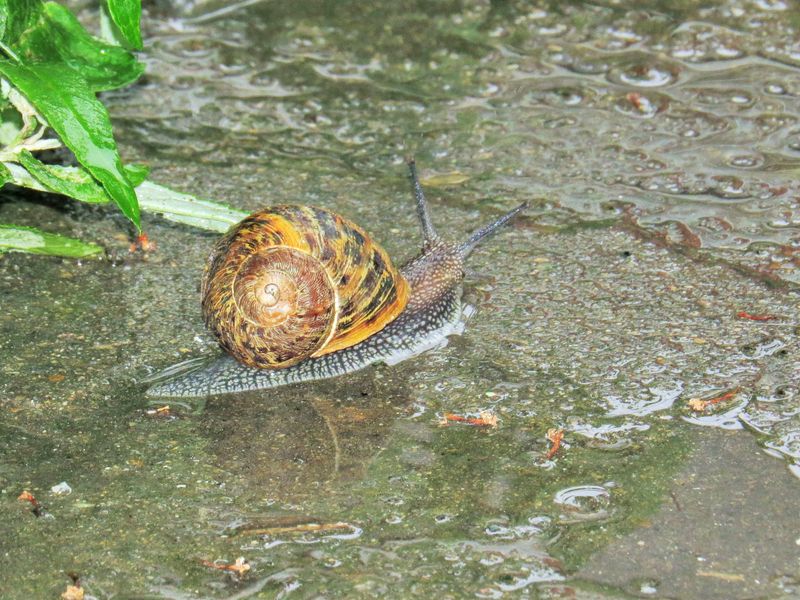
Sometimes the smallest creatures tell the biggest stories about an ecosystem’s health. The humble bald cypress snail—barely the size of my thumbnail—serves as a crucial indicator species in Louisiana’s wetlands. I’ve spent hours on hands and knees searching cypress trunks for these tiny mollusks, each discovery feeling like finding hidden treasure.
These specialized snails live exclusively on the trunks and branches of bald cypress trees, feeding on algae and fungi growing on the bark. Their sensitivity to water quality and air pollution makes them early warning systems for environmental changes. When their populations decline, scientists know something’s amiss in the ecosystem.
Their spiral shells, often with beautiful brown banding patterns, provide perfect camouflage against cypress bark. During flooding, they simply climb higher up the trees, while in drought, they seal themselves inside their shells with a mucus plug to prevent dehydration. These adaptations have allowed them to survive in Louisiana’s dynamic wetlands for thousands of years.
19. The Armored Giant: Gulf Sturgeon
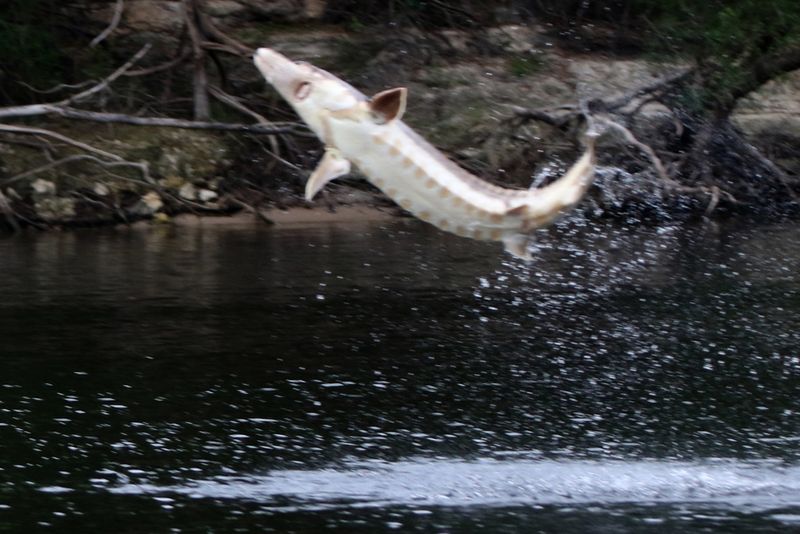
Leaping six feet into the air with a splash that sounds like a car hitting water, Gulf sturgeons make their presence known in Louisiana’s rivers! My fishing boat once took a direct hit from a jumping sturgeon—an encounter that left both me and the fish equally startled.
These armored behemoths can reach 8 feet long and weigh over 200 pounds, with rows of bony plates called scutes instead of scales. Five rows of these protective plates run along their bodies, giving them a prehistoric appearance fitting for a species that has remained virtually unchanged for over 200 million years. Their underslung mouths contain no teeth, instead using vacuum-like suction to feed on bottom-dwelling organisms.
Gulf sturgeons face numerous threats, including dam construction blocking their spawning migrations from saltwater to freshwater. Listed as threatened under the Endangered Species Act, these magnificent fish represent a conservation challenge for Louisiana’s waterways. Their recovery would signal healthier river systems for countless other species.
